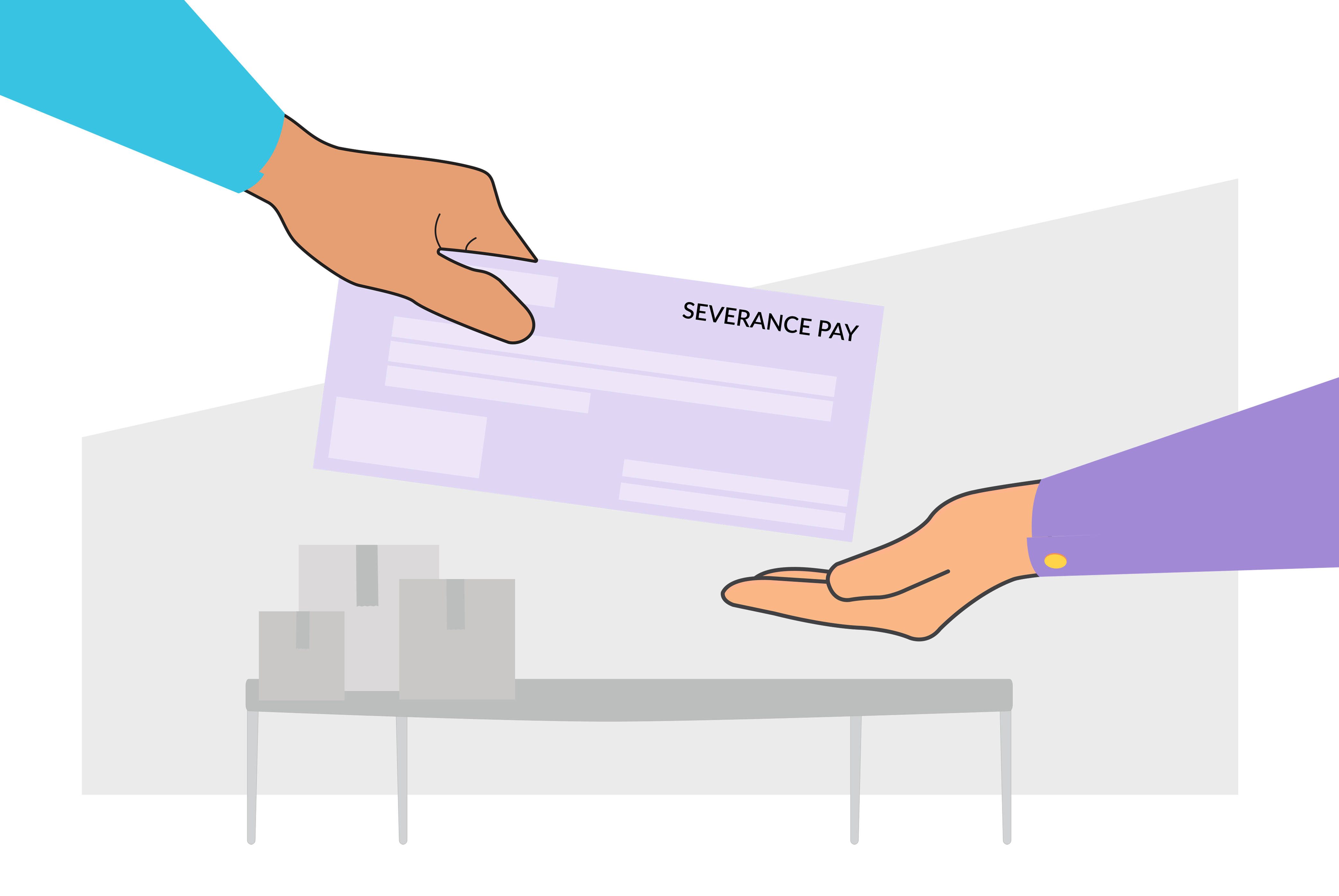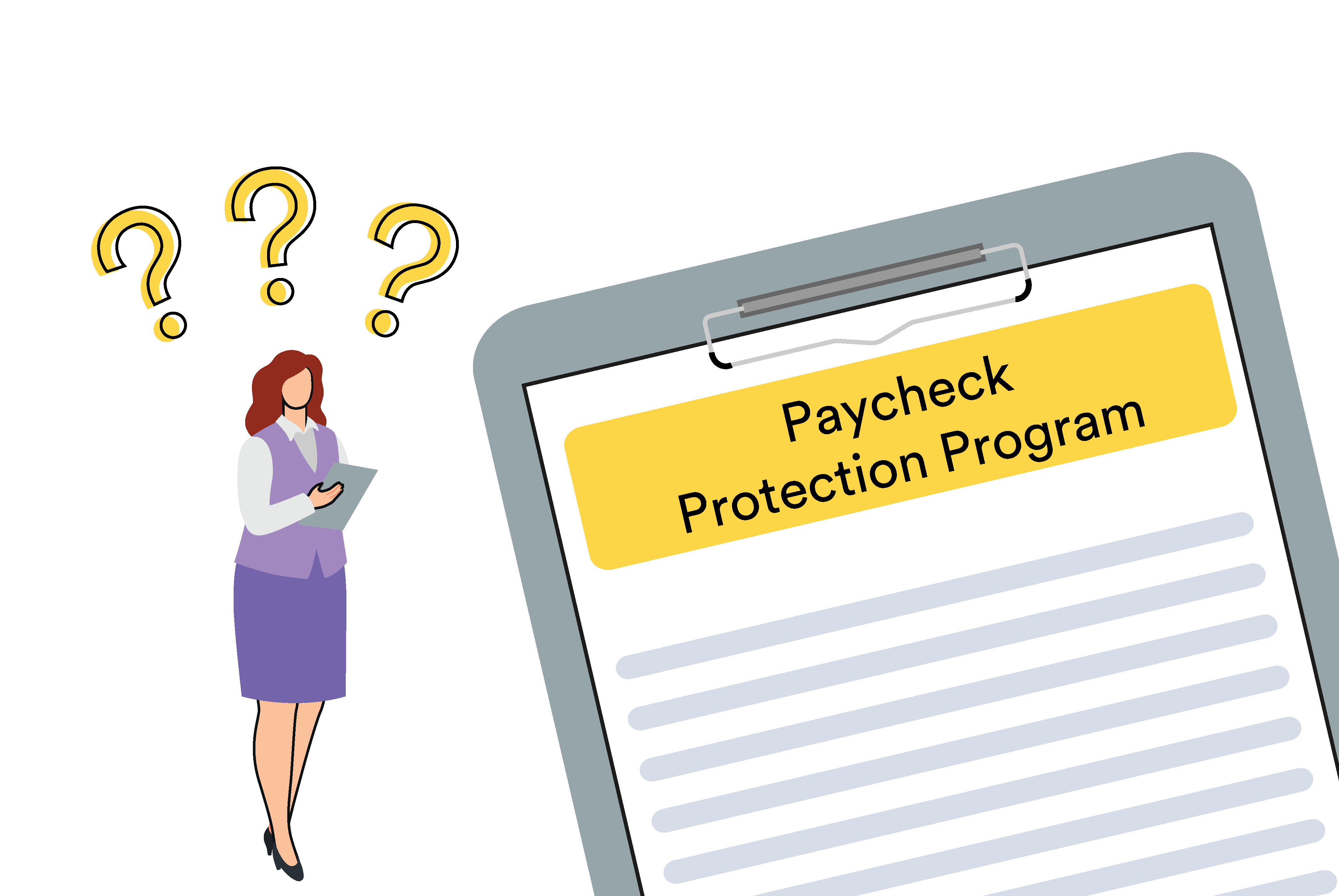As industries scale up or down, it is not uncommon that employers and employees will find themselves navigating issues around severance pay. Employees should ensure they understand all of the details in a severance package (or separation package), their responsibilities, and considerations like taxes before signing an agreement.

What Is Severance Pay?
An employer might offer a severance package to an employee or group of employees at the termination of employment. This is more common when the company is laying off employees, downsizing, or closing. It is also sometimes used when an employee is terminated for bad behavior to help the company avoid potential lawsuits. It is not typically used when an employee is fired for cause.
Under the Fair Labor Standards Act, there is no requirement for an employer to have a severance agreement unless they have more than 100 employees and are letting go of a significant portion of their workforce. In that case, employers must pay severance only if employees receive less than 60 days of notice.
Despite such a limited requirement for a business to offer severance, many still do. Both full and part-time employees are eligible for severance payments. Packages are typically based on length of employment. Commonly, one to two weeks of pay for every year of employment is used, but it changes based on the type of position.
Severance packages can be immediate upon the end of employment. However, payments resulting from a wrongful termination lawsuit are also severance packages.
What Do Common Severance Packages Include?
There is no one size fits all for severance packages, and as a result, they tend to differ greatly from business to business. However, the way they are paid out can be broken up into one of only two options: wages as a lump sum or payouts over time. Lump sums can work to the employees' advantage because, after the payout, they may become eligible for unemployment. However, there are advantages to payments spread out over a period of time.
Payments over a specific period of time — often called a continuation of salary — mean the employee would remain on the payroll for an agreed-upon amount of time, which includes a continuation of their benefits. If the payout is over time, they may not qualify for unemployment (or, if they do, typically for a smaller amount). In either case, employees don't have a choice in the manner; it is completely up to the discretion of the company in terms of how they pay out their severance.
That's the bad news. The good news is wages are not the only part of a severance package to consider. A robust package may also include unused vacation or sick time, pension or 401K plans, healthcare, or employee stock options. We take a look at each particular feature below.
Vacation and Sick Time
There is no federal requirement for a company to cash out unused vacation or sick time, and only a few states have laws requiring these payments. If an employer has a policy allowing for employees to be compensated for unused time off, then it may be included in a severance package as long as the employee was laid off and not fired for cause.
Healthcare
When an employee leaves, the employer is required to offer a healthcare Consolidated Omnibus Budget Reconciliation Act, more commonly known as COBRA. COBRA allows for the continuation of healthcare for the employee and any dependents on the plan. However, it is not required for an employer to include coverage of the premium in a severance package, so the employee may need to pay part or all of the COBRA premium.
Retirement Programs
If an employee terminated from an organization has a 401K or a pension plan, their retirement savings should be safe even if the company has closed or declared bankruptcy. There are federal laws that require an employer to protect those accounts. Additionally, the federal government protects several types of retirement programs.
If an employee participates in a 401(k) program or a defined contribution plan, a lump sum payout could become part of a severance package. If an employee is part of a defined benefit plan and receives a fixed benefit, the program will not take effect until retirement.
Employee Stock Option Plans
Companies that use an Employee Stock Option Plan (ESOP) will have a provision where employees forfeit their interest in any unvested stock options when they leave the company. However, when a severance package is involved, a plan is usually put in place to accelerate the vesting of any unvested options. The employee can then exercise their stock options or sell back to the company.
Tax Considerations
Keep in mind that just like regular pay, severance is taxable. Additionally, any vacation and sick time payouts would be taxable as wages. Whether the payment is a lump sum or payable over time does not matter. However, if the payment is a lump sum, the amount paid out might result in a higher tax bracket for the employee, and more taxes would need to be withheld.
Either the employer will withhold the appropriate amount of taxes — which will appear on a W-2 provided to the employee in January of the following year — or the employee will need to make estimated tax payments on the income. Those two options depend on the employers’ adherence and understanding of tax obligations, as well as how the severance package is structured.
Regardless of how they are structured, packages that result from a wrongful termination suit are also subjected to taxes. The IRS has determined that all severance pay is subject to employment taxes — and the Supreme Court upheld that belief in a 2014 case.
Withdraws from a pension plan or 401(k) will also be taxable unless they are transferred to a qualified plan — for example, an IRA.
General Tips
Beyond the areas discussed above, there are a few additional tips to consider:
- Severance packages are a useful method to protect a company from lawsuits. Therefore, requiring the employee to sign a document that releases the employer from future claims is common.
- If the employee is a union member, the employer must first contact the union — as early in the process as possible — and the union will then act as a mediator between the employer and employee or employees.
- The employer must be clear if a severance package offer is negotiable from the outset. Confusion in this area may lead to an employee trying to negotiate and inadvertently rejecting the offer. If the employee rejects an offer, the employee cannot come back later and accept.
- All of the information discussed is as applicable by federal law. State laws also need to be taken into consideration when determining severance packages.
Why It Matters
It is always unfortunate when a relationship between an employee and employer ends due to layoffs or a company closing. It can be a chaotic and uncertain time. A severance package can protect the employer and also provide some valuable stability for the employee while they find new employment.
Because there are no federal laws that require severance packages, no two packages will look alike. With all the variables included, it is helpful for both parties to understand the basics. It is not always something an employee, especially, will think about as they join a new company, but having this knowledge can further protect the employee and help them land on their feet.
On the job hunt after being let go? Let us help! At Joblist, we’ll help you find the right job for you.





